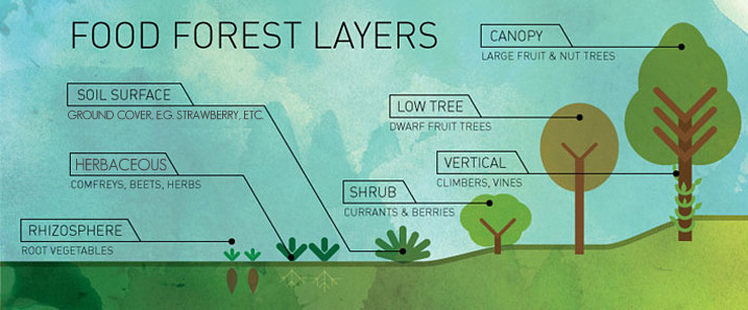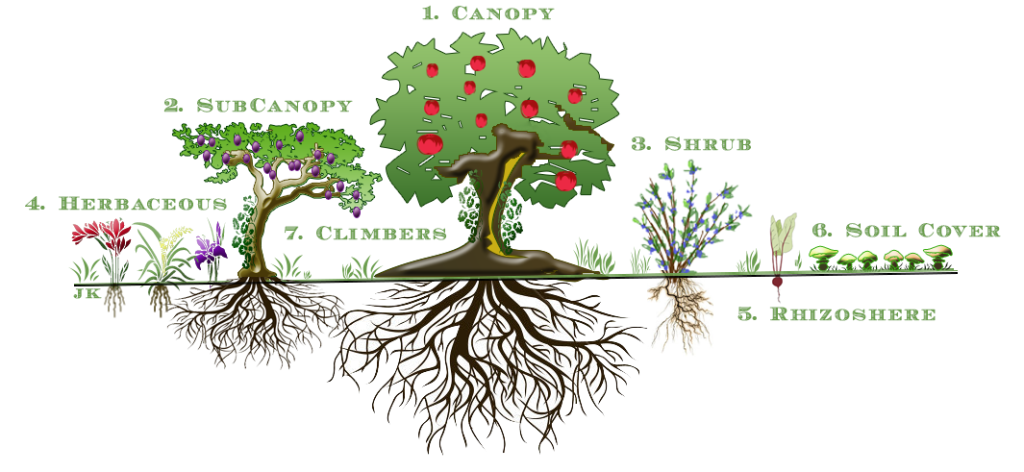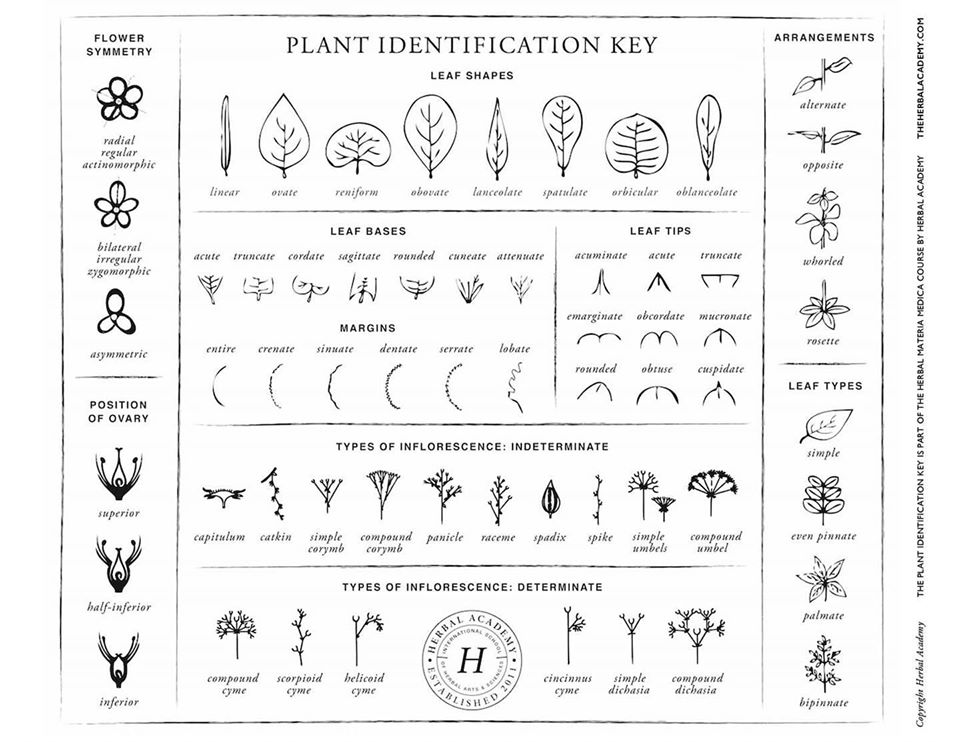What is a Food Forest…
A food forest, also called a forest garden, is a diverse planting of edible plants that attempts to mimic the ecosystems and patterns found in nature. Food forests are three dimensional designs, with life extending in all directions – up, down, and out.
Generally, we recognise seven layers of a forest garden the under story, the shrub layer, the herbaceous layer, the root layer, the ground cover layer, and the vine layer. Some also like to recognise the mycelial layer, layer eight (mushrooms). Using these layers, we can fit more plants in an area without causing failure due to competition.
FOREST GARDEN DESIGN CAN REDUCE INPUTS IN VARIOUS WAYS, INCLUDING:
placing emphasis on trees, shrubs, perennials, and self-seeding annuals, planting thickly and using ground covers to shade soil and suppress weeds,utilising nitrogen-fixing and nutrient-accumulating plants, chop-and-drop techniques, and returning wastes to the land to create healthy soil rather than applying fertiliser, planting a diverse array of plants that attract beneficial insects to pollinate the fruit crops and keep pest populations from exploding and causing damage, utilising several ground-shaping techniques to keep rain water on the site, and designing for placement of plants to create micro-climates and windbreaks.
A food forest does not have to be re-planted year after year. Once it is established, it is generally very resilient. Deer and rabbits might come and munch some of the herbaceous edibles in some areas, for example, but other species will not be palatable to them or will be out of their reach. Or perhaps some children will come running through the area in wild play, running off path and possibly causing some damage to the ground cover and herbaceous layers. Not only will they usually grow right back, since many will be perennials and have healthy underground systems, but the trees, shrubs, and vines should be undamaged.



